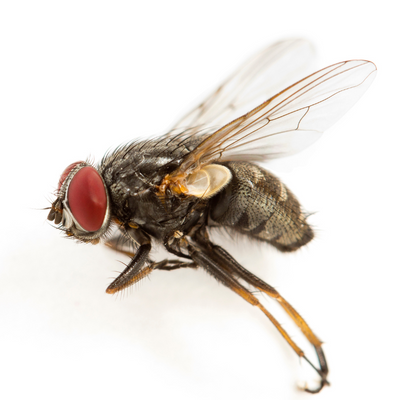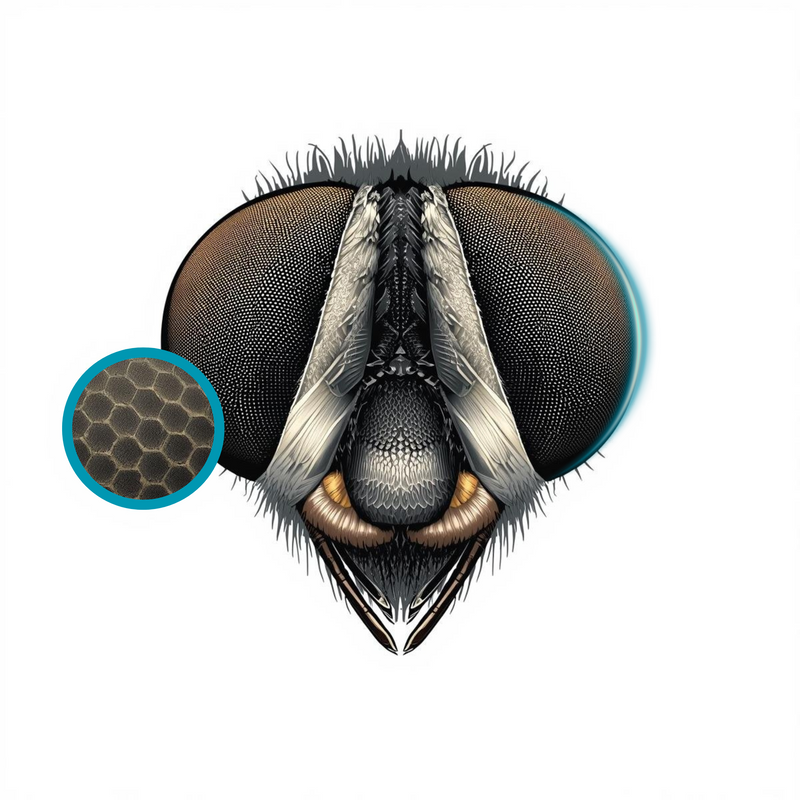Insects → House Flies
The House Fly
Understanding how flies see the world - and why light patterns change their behaviour.

Common Species
- Found worldwide in homes and kitchens
- Strongly attracted to odours
- Active in warmer months

Compound Eyes
-
1OmmatidiaEach compound eye contains thousands of tiny lenses. Each captures part of the visual field, together forming a mosaic image.
-
2Motion SensitivityFlies detect rapid movement far better than humans, allowing them to react almost instantly.
-
3Light/ReflectionsReflections and shadows create interference patterns that confuse their navigation.
Fly Behaviour
Attraction to Food
Flies are strongly attracted to odours from food and waste, sometimes overwhelming other cues.
Indoor Preference
Flies often enter homes to seek cooler, shaded areas during hot weather.
Sensitivity to Light
Rapid changes in light and reflections influence their movement and flight paths.
Why Light Patterns Work
Flies' compound eyes process thousands of micro-images. Repeated reflections and optical interference disrupt their ability to navigate.
Dome & Light
The dome bends natural light into multiple directions, sending scattered rays toward the fly’s compound eyes.
Visual Confusion
Thousands of ommatidia receive overlapping light signals, creating confusion the fly cannot process.
Avoidance Response
Unable to resolve the patterns, the fly’s reflex is to turn away and avoid the source.
Looking to Deter Flies?
Our products are designed to work with the science of fly vision - humane, safe, and lab-tested.
Browse Products for Flies